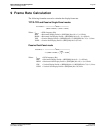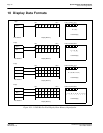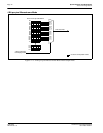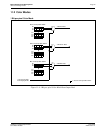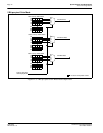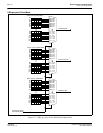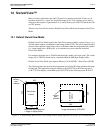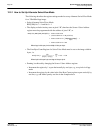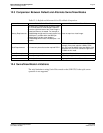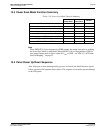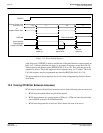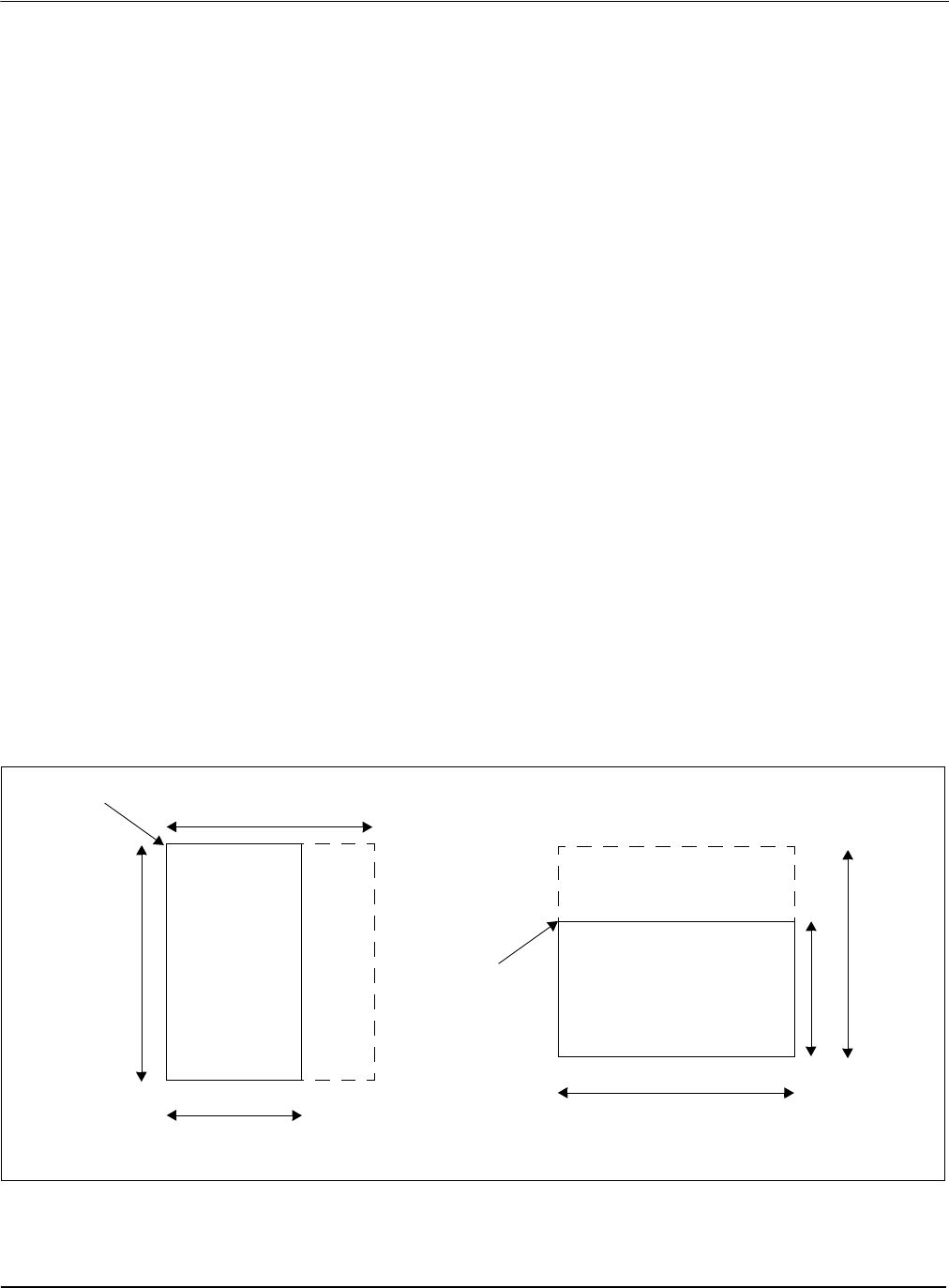
Epson Research and Development Page 77
Vancouver Design Center
Hardware Functional Specification S1D13705
Issue Date: 02/02/01 X27A-A-001-10
12 SwivelView™
Many of todays applications use the LCD panel in a portrait orientation. In this case it
becomes necessary to “rotate” the displayed image by 90°. This rotation can be done by
software at the expense of performance or, it can be done by the S1D13705 hardware with
no CPU penalty.
There are two SwivelView modes: Default SwivelView Mode and Alternate SwivelView
Mode.
12.1 Default SwivelView Mode
Default SwivelView Mode requires the SwivelView image width be a power of two, e.g. a
240-line panel requires a minimum virtual image width of 256. This mode should be used
whenever the required virtual image can be contained within the integrated display buffer
(i.e. virtual image size ≤ 80K bytes), as it consumes less power than the Alternate
SwivelView Mode.
For example, the panel size is 320x240 and the display mode is 8 bit-per-pixel. The virtual
image size is 320x256 which can be contained within the 80K Byte display buffer.
Default SwivelView Mode also requires Memory Clock (MCLK) ≥ Pixel Clock (PCLK).
The following figure shows how the programmer sees a 240x320 image and how the image
is displayed. The application image is written to the S1D13705 in the following sense:
A–B–C–D. The display is refreshed by the S1D13705 in the following sense: B-D-A-C.
Figure 12-1: Relationship Between The Screen Image and the Image Refreshed by S1D13705 in Default Mode
256
256
image seen by programmer
= image in display buffer
320
SwivelView
window
320
240
AB
C
D
D
C
B
A
240
start
address
SwivelView
window
display
E
E
image refreshed by S1D13705
start
address
physical
memory



